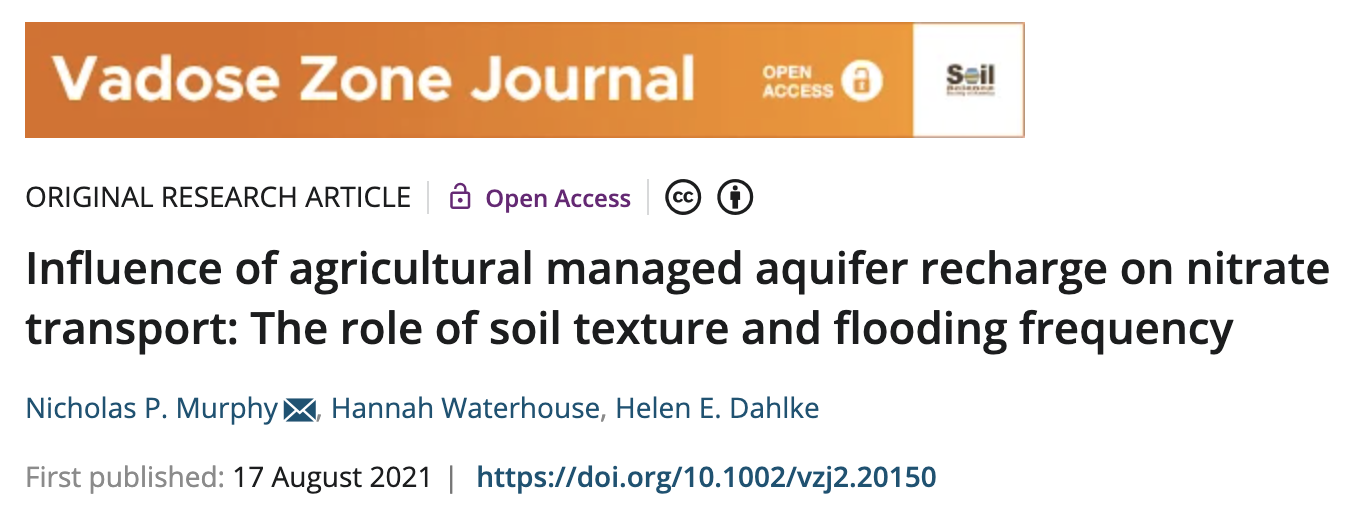Influence of agricultural managed aquifer recharge on nitrate transport: The role of soil texture and flooding frequency
Nitrate is both leached and mineralized from organic nitrogen during and after Ag-MAR
Agricultural managed aquifer recharge (Ag-MAR) is a concept in which farmland is flooded during the winter using excess surface water to recharge the underlying groundwater. In this study, we show how different recharge practices affect NO3− leaching and mineralization–denitrification processes in different soil systems. Two contrasting soil textures (sand and fine sandy loam) from the Central Valley, California, were repeatedly flooded with 15 cm of water at varying time intervals in field and soil column experiments. Nitrogen species (NO3–, NH4+, total N), total C, dissolved O2, and moisture content were measured throughout the experiments. Results show that when flooding occurs at longer intervals (every 1–2 wk), N mineralization increases, leading to an increase of mobile NO3− in the upper root zone and leaching of significant quantities of NO3− from both soil textures (137.3 ± 6.6% [sand] and 145.7 ± 5.8% [fine sandy loam] of initial residual soil NO3−) during subsequent flooding events. Laboratory mineralization incubations show that long flooding intervals promote mineralization and production of excess NO3− at rates of 0.11–3.93 mg N kg–1 wk–1 (sand) and 0.08–3.41 mg N kg–1 wk–1 (fine sandy loam). Decreasing the flooding frequency to 72 h reduces potential mineralization, decreasing the amount of NO3− leached during flooding events (31.7 ± 3.8% [sand] and 64.7 ± 10.4% [fine sandy loam] of initial residual soil NO3–). The results indicate that implementing recharge as repeated events over a long (multiple-week) time horizon might increase the total amount of NO3− potentially available for leaching to groundwater.

